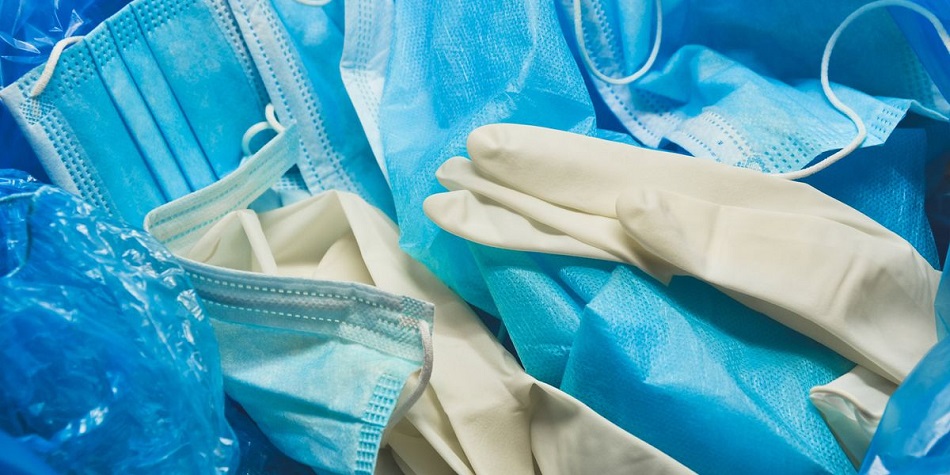The rise in environmental awareness has led to increased calls for, and interest in, recycling different types of waste produced in all kinds of settings, including healthcare. This article looks at the basics of recycling medical personal protective equipment (PPE), hospital supplies and medical devices.
Recycling PPE
One of the issues that arose during the pandemic was the use of PPE. In a healthcare setting, this refers to such items as facemasks and shields, disposable gloves, hair nets, safety glasses, and gowns. The increased use of PPE led to the problem of what to do with discarded items. Unfortunately, PPE can be hard to recycle because of its composition and the cost involved.
A further problem with recycling PPE from health facilities is potential contamination. This type of waste can be classified as hazardous, meaning that recycling collection facilities may not accept PPE from healthcare settings. The good news is that methods are being developed to facilitate the recycling of medical PPE, alongside a greater appetite among governments and managers to make the healthcare sector more environmentally friendly.
Recycling Hospital Supplies
Aside from medical PPE, hospitals and healthcare facilities use a large quantity of single-use and disposable supplies, such as needles and syringes, hand wipes, medical curtains, surgical instruments, swabs, and tongue depressors. In addition to the actual items is their packaging. The issues with recycling hospital supplies are similar to PPE, namely the composition of the items and the risk of contamination.
Single-use plastic presents specific problems, which are highlighted in a 2018 survey that found that this type of material comprises one-fifth of medical waste from US hospitals. However, nearly half of the staff surveyed reported a lack of knowledge about recycling.
Supplies that have not come into direct contact with patients or their bodily fluids are technically recyclable. However, there are various barriers to increasing the rate of recycling. These include regulatory and legal hurdles, as well as the cost of recycling and the attitude among the healthcare profession – in some countries, at least – that all clinical waste is contaminated and therefore should be sent to landfill or incinerated.
Recycling Medical Devices
A final category of recycling in a healthcare setting is medical devices. This category covers a broad area, including CT scanners, blood glucose monitors, and ultrasound machines, as well as items such as crutches and wheelchairs. Each of these sub-categories offers its challenges when it comes to disposal. For example, the rules governing waste electronics. Issues around contamination are also relevant.
In some ways, medical devices are easier to process than PPE or medical supplies. Electronics can be dismantled to their composite parts for separate recycling or reuse. There may also be an opportunity to refurbish items. Other types of medical devices can be decontaminated and sterilized for reuse. Again, there are rules and regulations governing how medical devices should be processed to minimize risks to patients, healthcare workers, and recycling operatives.
Overall, hospitals and healthcare settings have a role to play in reducing waste through reusing and recycling. The keys to improving these rates are changing attitudes, advances in technologies that make recycling easier and more cost-effective, as well as modernizing the laws and regulations that govern hospital waste disposal.
